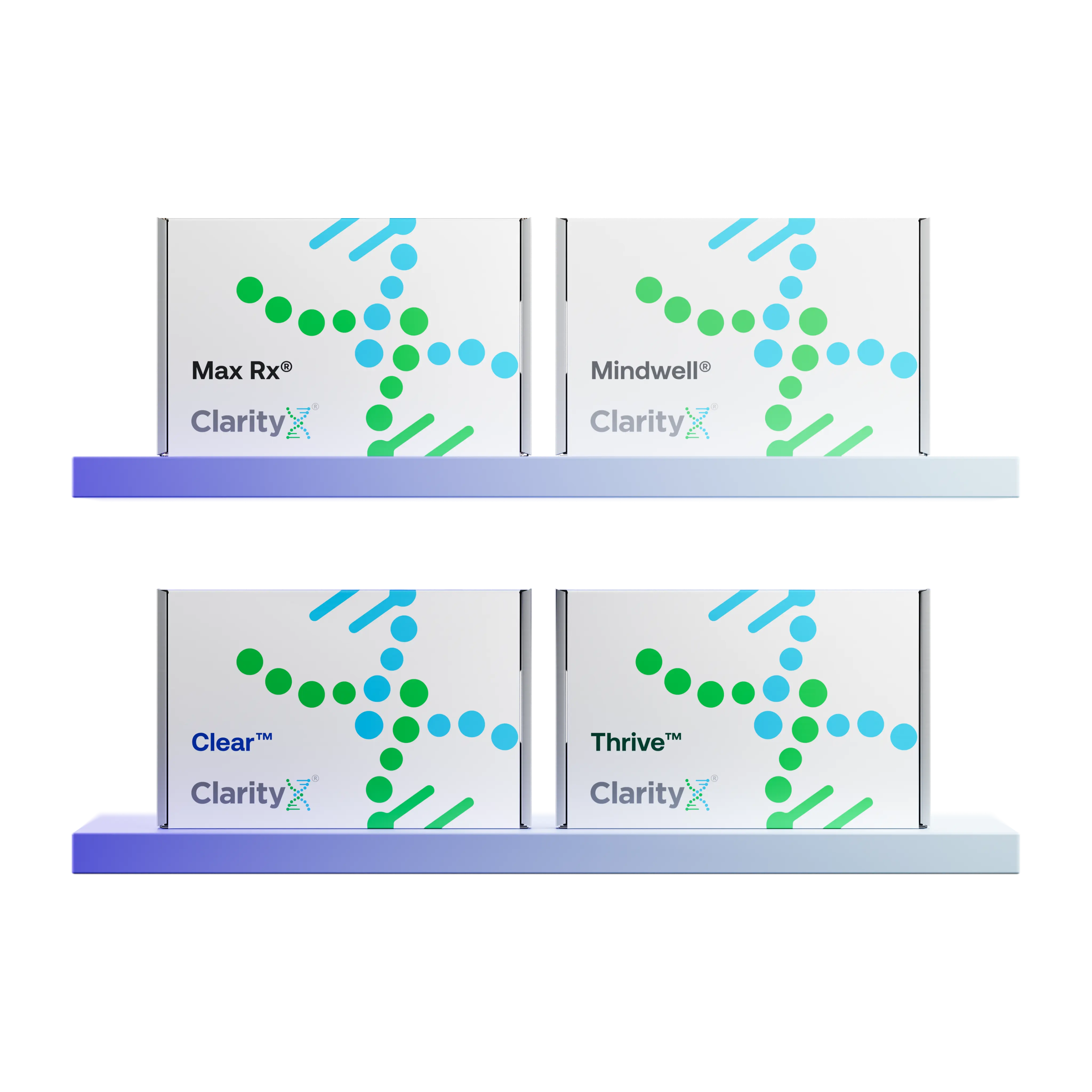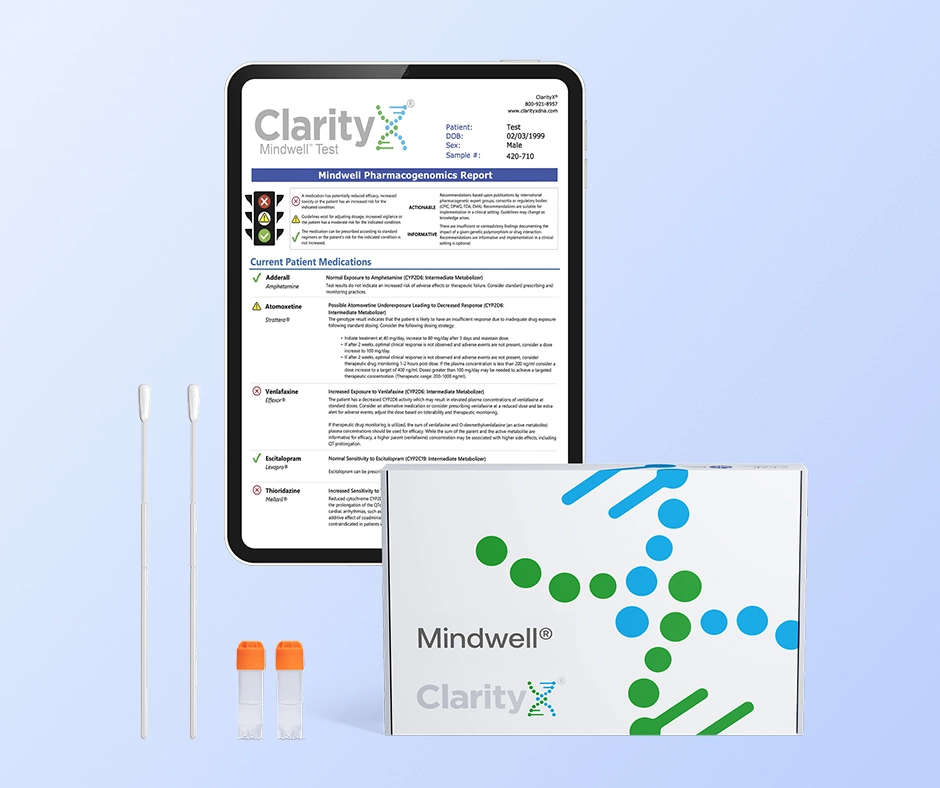Key Highlights
- The Gut and Psychology Syndrome (GAPS) diet is a nutritional protocol designed to improve gut health.
- It's based on the theory that healing the gut can lessen behavioral conditions linked to neurological function.
- The diet is highly restrictive, eliminating grains, starchy vegetables, and processed foods.
- There is currently limited scientific evidence to support its effectiveness for autism symptoms.
- Parents should be aware of potential risks, such as nutritional deficiencies, and consult a healthcare provider.
- The protocol has specific stages, from a strict introduction phase to a long-term maintenance diet.
Introduction
The Gut and Psychology Syndrome (GAPS) diet is a nutritional protocol designed to improve gut health. Although some parents and practitioners believe that the GAPS diet may benefit children with autism spectrum disorder, it is important to note that most healthcare professionals do not widely recommend the GAPS diet for autism spectrum disorder due to limited scientific evidence supporting its effectiveness.
Understanding the GAPS Diet
The GAPS diet, which stands for "Gut and Psychology Syndrome," is a strict nutritional protocol. It's built on the idea that many psychological conditions and neurological issues stem from an unhealthy gut. By following the GAPS protocol, the goal is to heal the gut lining, rebalance gut bacteria, and reduce inflammation.
This approach suggests that restoring digestive health can lead to improvements in a wide range of conditions, including autism spectrum disorder. Let’s examine the origins of this diet and its fundamental principles.
Background and Origins of the GAPS Diet
A neurologist named Natasha Campbell-McBride created the Gut and Psychology Syndrome (GAPS) diet. Her personal journey to find a way to help her son with autism led her to develop the theory that there’s a direct connection between gut health and brain function
Dr. Campbell-McBride’s theory suggests that an imbalance in gut bacteria can lead to a condition called “leaky gut.” In this state, she believes toxins can enter the bloodstream and affect the brain, impacting development and function. Based on this idea, she developed the GAPS protocol as a dietary approach to restore digestive health to improve neurological and psychological conditions. The diet has since become popular, with many parents sharing stories of positive results in their children.
Dr. Campbell-McBride developed the GAPS diet based on her personal experiences and later work. The comprehensive protocol she created aims to restore digestive health, which she theorizes can improve a person’s neurological and psychological well-being.
Core Principles of the Protocol
The GAPS diet is based on the principles of the Specific Carbohydrate Diet (SCD) but has its own unique structure. The primary goal is to heal the digestive system and restore a healthy balance to the gut microbiota. It operates on the belief that a healthy gut is essential for a healthy brain.
The protocol is built around a few key ideas. It focuses on removing foods that are difficult to digest and can irritate the gut, while introducing nutrient-dense foods for recovery.
The core principles of the GAPS diet include:
- Elimination: Removing all grains, processed sugars, starchy vegetables, and commercial dairy products.
- Healing: Consuming large amounts of homemade bone broth, which is rich in minerals and amino acids that help repair the gut lining.
- Repopulation: Introducing probiotic-rich fermented foods like homemade yogurt and sauerkraut to restore beneficial gut flora.
- Nourishment: Emphasizing easily digestible, nutrient-dense foods like organic meats, non-starchy vegetables, and healthy fats.
The Link Between GAPS Diet and Autism
The GAPS diet’s link to the autism spectrum is based on the gut-brain axis theory, which suggests that the gut’s health directly impacts brain function. Proponents of the diet believe that improving gut health may reduce certain symptoms associated with autism.
While scientific evidence on this topic is still developing, the concept that diet can influence neurological conditions is becoming a more prominent area of interest.
Gut Health and Neurological Function
The relationship between your gut and brain is a powerful one. This "gut-brain connection" means that the state of your digestive system can impact your mood, behavior, and cognitive function. Your gut is home to trillions of microorganisms, collectively known as the gut microbiome or gut flora. A healthy balance of these microorganisms is crucial for overall well-being.
When this balance is disrupted, it can lead to issues such as increased intestinal permeability, often called "leaky gut." This condition allows undigested food particles and toxins to pass from the gut into the bloodstream, potentially triggering inflammation and affecting neurological function.
Some research supports this connection in the context of autism. For example, one study found that a fecal transplant designed to alter the gut microbiome resulted in improved digestive and autism-related symptoms. [1] This highlights how changes in gut health might influence neurological outcomes.
Why Is the GAPS Diet Considered for Autism?
The GAPS diet is often considered for individuals with autism spectrum disorder because many experience co-occurring digestive issues, such as constipation, diarrhea, and abdominal pain. The diet's core premise is that these digestive problems and the underlying gut imbalance may contribute to or worsen the behavioral and psychological conditions associated with autism.
By focusing on healing the gut, the diet aims to reduce the body's toxic load and inflammation, which proponents believe can lead to improvements in brain function. The theory is that by eliminating hard-to-digest foods and introducing healing nutrients, you can repair the gut lining and restore a healthy microbial balance.
While a direct causal link has not been proven through large-scale studies, the anecdotal reports from parents have kept the diet in the conversation. They hope that addressing gut health will positively impact focus, behavior, and communication, making it a dietary intervention worth exploring for some families.
Find your perfect test
in just a few clicks
Our quiz matches you with the ClarityX® test that fits your health journey, personalized, simple, and clear.

Stages of the GAPS Diet
Starting the GAPS diet isn't as simple as just changing your shopping list. The protocol is structured into distinct phases to heal the digestive system gently. It begins with a highly restrictive introduction phase designed to calm inflammation and repair the gut lining.
After this initial stage, you transition to the full GAPS diet, which serves as a long-term maintenance plan. Understanding these dietary changes is key to implementing the protocol correctly. Below, we’ll examine what each stage entails.
Introduction Phase (Elimination)
The introduction phase of the GAPS diet is the most restrictive part of the protocol. Its main purpose is to heal and seal the gut lining quickly by providing simple, easily digestible nutrients. This phase is broken down into six small steps, and you only move to the next step once your digestive system has stabilized.
The diet starts with simple foods, focusing on homemade meat or fish stock, soups with well-cooked vegetables, and probiotic foods like juice from homemade sauerkraut. You can also drink ginger tea with a bit of honey between meals to calm the digestive system.
As you continue, you slowly introduce more food such as raw organic egg yolks, stews, fermented fish, and homemade ghee. The pace is different for everyone, and it’s suggested that you wait until your stools are normal before moving on to the next step. This gradual process is meant to give the gut time to heal without being overwhelmed.
Full GAPS Diet (Maintenance)
Once the introduction phase is complete and digestion has improved, you can transition to the full GAPS diet. This is the main maintenance part of the protocol and is typically followed for one to two years, or sometimes longer. This phase offers a more varied and balanced diet while still adhering to the core principles of excluding grains, sugar, and starchy vegetables.
The full GAPS diet incorporates all the foods from the introduction phase and expands the menu significantly. You can enjoy a wide range of homemade meat (preferably grass-fed), fish, organic eggs, fresh vegetables, and fruits. Healthy fats from nuts, seeds, and cold-pressed olive oil are also staples.
Fermented foods are a core part of the diet because they support the gut microbiome. The goal of this phase is to provide sustained nourishment and maintain a healthy gut while slowly preparing the body for the reintroduction of a wider variety of foods in the future.
Foods to Eat on the GAPS Diet for Autism
When following the GAPS diet for autism, the focus is on whole, unprocessed, and nutrient-rich foods. The list of recommended foods is designed to be gentle on the digestive system while providing the building blocks needed for gut healing and brain health. These digestible foods are the foundation of the diet.
Introducing new foods should be done carefully, especially after the restrictive introduction phase. So, which foods are encouraged on this plan? Let's explore the key foods to include and some tips for meal planning.
Recommended Nutrient-Dense Foods
The GAPS diet emphasizes nutrient-dense foods that help repair the gut and reduce inflammation. Bone broth is a cornerstone, as it’s rich in minerals and amino acids that support the gut lining. Fermented foods such as homemade yogurt, kefir, and sauerkraut are also crucial for providing probiotics to rebalance gut flora.
Healthy fats are another key component. These include animal fats like ghee, duck fat, and fats from high-quality meats, as well as cold-pressed olive oil and coconut oil. These essential fatty acids are vital for brain health. For protein and other key nutrients, the diet includes high-quality homemade meat, wild-caught fish, and organic eggs. Non-starchy vegetables provide fiber and essential vitamins
Here is a table of recommended foods:
Meal Planning Tips for Families
Adopting the GAPS diet for a child on the autism spectrum can feel overwhelming, but a solid meal planning strategy can make it much more manageable. Since the diet plan requires a lot of homemade foods, preparing meals in advance is essential. Do you have a free weekend afternoon? Use it for batch cooking.
Making a large pot of bone broth, chopping vegetables for the week, or preparing a big batch of stew can save you a lot of time and stress during busy weekdays. This helps ensure you always have GAPS-friendly food on hand. Here are a few more tips to help you manage the diet:
- Plan Weekly Menus: Sit down once a week to plan all meals and snacks. This enables you to create a shopping list and ensures you have all the necessary ingredients on hand.
- Keep it Simple: Especially in the beginning, stick to simple recipes. Soups, stews, and roasted meats with vegetables are easy to prepare and align with the fundamental concept of the diet.
- Involve Your Child: If appropriate, let your child help with meal prep. This can make them more willing to try different foods.
- Focus on Nutritional Needs: Always ensure the diet plan meets your child's complete nutritional needs by including a variety of approved foods.
Foods to Avoid on the GAPS Diet
Just as important as the foods you eat on the GAPS diet are the foods you must avoid. This is a restrictive diet, and several major food groups are eliminated. The goal is to remove foods that are considered difficult to digest, inflammatory, or damaging to the gut lining.
The GAPS diet excludes all grains, processed sugars, and some starchy vegetables. Knowing which foods to eliminate is the first crucial step. The following information will cover common exclusions and offer guidance on managing those dietary limitations.
Common Dietary Exclusions
The GAPS diet requires the strict avoidance of several food groups that are believed to contribute to poor gut health. The most significant exclusion is all grains, including wheat, rice, oats, and corn. This makes the diet a completely grain-free diet. All processed sugars and foods containing them are also forbidden.
Additionally, the diet eliminates most commercial dairy products due to processing and the presence of lactose. However, some hard cheeses and homemade fermented dairy (such as yogurt and kefir) are allowed. Starchy vegetables such as potatoes, yams, and parsnips are also on the "avoid" list because their complex carbohydrates can be difficult to digest.
Other foods to avoid include:
- Processed and refined carbohydrates
- Artificial sweeteners and preservatives
- Legumes like soybeans and chickpeas (though lentils and lima beans are sometimes allowed)
- Commercially processed foods of any kind
This specific carbohydrate diet approach is designed to starve out harmful gut bacteria and promote healing.
How to Manage Food Restrictions
Managing the food restrictions of the GAPS diet can be challenging, especially for families with picky eaters. The key is to be patient and introduce new foods and flavors gradually. Don't expect your child to love everything immediately. Focus on finding GAPS-approved foods they do enjoy and build from there.
Finding creative substitutes for forbidden foods can also help. For example, you can bake bread and treats using nut flours instead of grain flours. Mashed cauliflower can be a good substitute for mashed potatoes. Exploring different recipes can keep meals interesting and prevent feelings of deprivation.
A healthcare professional might suggest dietary supplements to ensure you’re getting all the nutrients you need.. This could include probiotics to support gut health or specific digestive enzymes to aid digestion. Always consult with a provider before adding any supplements to your child's regimen, as they can guide you on the best way to manage this restrictive diet safely.
Starting the GAPS Diet for a Child with Autism
If you're considering the GAPS protocol for a child with autism spectrum disorder, it's essential to approach it thoughtfully. This dietary intervention requires significant commitment and careful planning. Before you begin, it's crucial to understand the steps involved in transitioning and to seek professional guidance.
Jumping into such a restrictive diet without preparation can be stressful for both you and your child. Consulting a healthcare provider is a non-negotiable first step. Here are some guidelines to help you get started.
Steps for Transitioning to the Diet
Transitioning to the GAPS diet should be a gradual process to help your child's body adapt and minimize any potential negative reactions. Starting the full diet plan overnight can be a shock to the system. Instead, begin by slowly removing forbidden foods from your home while introducing GAPS-friendly alternatives.
For instance, you might begin by cutting out processed sugars and snacks for a week or two. Then, move on to removing grains. This slower approach gives your child time to adjust to new tastes and textures without feeling overwhelmed.
Here are a few practical steps for a smoother transition:
- Start with Broth: Begin by introducing homemade bone broth into your child's daily routine. It’s a core part of the GAPS protocol and helps prepare the digestive system.
- Remove Foods in Stages: Eliminate one food group at a time,like sugar first, then grains, then starchy vegetables.
- Introduce New Foods Slowly: When adding GAPS-friendly foods, introduce them one at a time to monitor for any reactions.
- Be Patient: Expect some resistance. It takes time to adjust to a new way of eating.
Consulting Healthcare Professionals
Before starting a restrictive diet like GAPS for a child with autism, consulting with healthcare professionals is absolutely critical. A pediatrician or a family doctor can help you assess your child's overall health and determine if such a significant dietary change is appropriate. They can also monitor for any potential health issues along the way.
A registered dietitian or nutritionist with experience in pediatric nutrition is another invaluable resource. They can help you create a balanced meal plan that meets all of your child's nutritional needs, which is a major concern with such a restrictive diet. They can also offer practical advice for implementing the diet and managing food aversions.
While some healthcare providers may recommend the GAPS diet as an alternative treatment, it is not a universally endorsed approach for autism. Many professionals caution against it due to the lack of scientific evidence and potential risks. An open conversation with your healthcare provider will help you weigh the pros and cons and make an informed decision for your child.
Potential Benefits for Children with Autism
Although the scientific community is still calling for more research, many parents who have used the GAPS diet report seeing positive changes in their children with autism. These accounts are a main reason why families consider this intense protocol. The improvements often relate to both physical and behavioral issues.
Proponents of the diet believe these changes are a result of a healthier gut, which leads to decreased inflammation and a better-functioning nervous system.
Reported Improvements in Symptoms
Parents who have tried the GAPS diet for their children with autism often share stories of significant improvements. One of the most commonly reported benefits is a reduction in gastrointestinal symptoms. Many children with autism struggle with digestive issues, and parents often note better digestion, less bloating, and more regular bowel movements after starting the diet.
Beyond improvements in gut health, some parents report positive changes in behavior and cognition. These anecdotal accounts suggest that the diet may help with a variety of autism symptoms.
Reported improvements include:
- Enhanced focus and attention
- Better mood and reduced irritability
- Decreased hyperactivity
- Advances in communication and social skills
It's imperative to remember that these are personal observations and not findings from controlled scientific studies. Even so, these potential gains are a powerful motivator.
Parents’ Experiences and Stories
The GAPS diet journey is often shared through personal stories and testimonials from parents. Dr. Natasha Campbell-McBride, the GAPS creator, documented her experience using the protocol to help her own son, which is a foundational story for the GAPS community. These parents’ experiences offer valuable insights into the day-to-day realities of implementing the diet.
Many parents describe a challenging but ultimately rewarding process. They speak of seeing their children become more engaged, calm, and communicative. For instance, some share that their child, who previously struggled with severe digestive pain and behavioral outbursts, showed remarkable improvements in both areas after a few months on the diet.
These stories provide hope and a sense of community for families exploring alternative options. While they are not a substitute for scientific evidence, these personal accounts highlight the potential impact that a dedicated dietary intervention can have on an individual's quality of life.
Risks, Criticisms, and Side Effects
Despite the positive anecdotes, the GAPS diet is not without its risks and criticisms. Because it is a highly restrictive diet, healthcare professionals have raised concerns about its safety and sustainability, especially for growing children. The potential for nutritional deficiencies is a significant health risk that needs to be carefully considered.
Furthermore, the diet lacks robust scientific backing, which makes many experts hesitant to recommend it.
This "one-size-fits-all" methodology also conflicts with the growing field of nutrigenomics, which studies how individual genetic differences affect our response to specific foods and nutrients. It's crucial to be aware of these potential downsides before committing to such a demanding protocol.
The principles of nutrigenomics testing suggest that a diet's effectiveness is highly individual. A person’s genetic makeup can influence their need for specific nutrients (like choline or B vitamins) or their ability to efficiently process fats and carbohydrates. The GAPS diet's rigid protocol completely disregards this genetic individuality. By prescribing the same restrictive plan for everyone, it risks being ineffective or even counterproductive for individuals whose genetic predispositions require nutrients that the diet strictly limits. For some people, the GAPS protocol could inadvertently create the very imbalances it claims to heal.
Possible Nutritional Concerns
One of the biggest criticisms of the GAPS diet is the risk of nutritional deficiencies. By eliminating entire food groups such as grains and dairy, the diet may lack important nutrients such as calcium, vitamin D, and certain B vitamins. This is particularly concerning for children, whose growing bodies have high nutritional needs.
The restrictive nature of the diet can also be problematic for children with autism who already have food aversions. For picky eaters, sticking to the diet’s approved foods might not provide enough calories or variety. This could lead to poor growth and malnutrition. Digestive health can also be impacted by a lack of fiber if not carefully managed.
Other health risks include:
- Food Poisoning: The diet encourages unpasteurized dairy and raw eggs, which carry a risk of serious bacterial infections.
- Low Fiber Intake: A heavy emphasis on fats and proteins at the expense of fiber-rich foods could lead to constipation.
- Disordered Eating: The strict rules could foster an unhealthy relationship with food, potentially leading to orthorexia.
Scientific Evidence and Controversies
A major point of controversy surrounding the GAPS diet is the lack of strong scientific evidence to support its claims for treating autism. Most of the support comes from anecdotal reports rather than rigorous, peer-reviewed studies. So far, no large-scale clinical trials have been conducted to prove its effectiveness . One small study that looked at children on the GAPS diet did find some improvements in behavior, but the study had significant flaws. The results were based on parental reports, which can be biased, and many participants were unable to stick to the restrictive diet. Furthermore, the children were also given supplements, making it impossible to say if the diet alone was responsible for the changes.
Because the current research is inconclusive, most mainstream medical organizations do not recommend the GAPS diet as a treatment for autism. The controversies surrounding its restrictive nature and unproven claims mean families should approach it with caution and skepticism.
Conclusion
The GAPS diet provides an approach for families to use food to support children with autism. By focusing on nutrient-rich foods and the importance of gut health, some parents believe they can see improvements in their child’s symptoms.
It’s important to approach the diet thoughtfully, considering both its potential benefits and challenges. You should always consult with healthcare professionals before making major dietary changes to ensure your child’s needs are met.
Frequently Asked Questions
How long should a child with autism follow the GAPS diet?
The duration varies for each individual. Proponents often recommend following the full GAPS diet for at least one to two years. The transition off the diet typically begins only after a person has experienced normal digestive health for at least six months. Some may follow the dietary changes for longer.
Are there any scientific studies supporting the GAPS diet for autism?
There’s currently a lack of strong scientific evidence to support the GAPS diet for autism spectrum disorder. The research that exists is limited and hasn’t led to any clear conclusions, with most of the support for the diet coming from personal stories rather than controlled studies. More research is needed to prove its effectiveness.
Is the GAPS diet approved by doctors for autism treatment?
The GAPS diet is not a mainstream or medically approved treatment for autism spectrum disorder. Most healthcare professionals and medical organizations do not recommend it due to the lack of scientific evidence and concerns about its restrictive nature. Always consult a healthcare provider before starting this or any other dietary intervention.
References:
https://my.clevelandclinic.org/health/treatments/23543-scd-specific-carbohydrate-diet
https://www.massgeneralbrigham.org/en/about/newsroom/articles/5-things-to-know-about-gut-microbiome
https://www.ifm.org/articles/intestinal-permeability-and-diseases
https://communityhealth.mayoclinic.org/featured-stories/healthy-gut-microbiome
https://www.healthline.com/nutrition/gaps-diet
https://www.mayoclinic.org/diseases-conditions/autism-spectrum-disorder/symptoms-causes/syc-20352928




